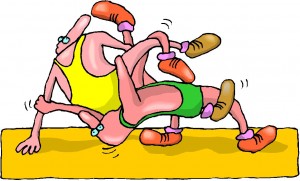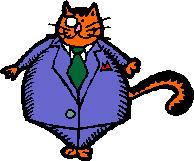So, you’ve done the deep psychological analysis, built the world, have a broad outline, now what? How do you place your character into the story and make it believable? How do you keep the protagonist’s story on track? How do you keep character interactions interesting, genuine and moving the story along?
In complex novels, I use charts to help me along, to keep information organized and to consider the deeper questions of values and motivation for each significant character. In every instance, I refer to the major points from the story arc because that’s when those critical moments of change, realization, action and reaction happen. This system keeps me from straying from core values during interactions. What happens in those moments when characters surprise me and go in a totally different direction for reasons of their own? As long as the character is true to their core (usually is), I embrace the change and make adjustments accordingly.
Relationship Arc Chart- Protagonist and a Key Character
|
Disasters (faced by the protagonist) |
Protagonist (reaction to the disaster) |
Pam (reaction to the protagonist) |
|
| Act 1 | Attackers at warehouse | Is dumbfounded by the attack and then decides he must figure out who did it. Is afraid because goods were damaged, he didn’t finish his work and is late to see his father | Likes him a lot but doesn’t always trust her feelings for him – is hot and cold toward him- her father warns her away. Not sure if he’s a victim or incompetent. |
| Overhears conspirators re father and power & sees someone run away | Suspicious of everyone except his friend and Pam. Urgency to do something before it’s too late. | Wonders if he’s making things up – see this in her body language and cautious language | |
| Discovers father is dead | Is devastated, angry and feels he failed his father. Resolves to solve murder. | Has deep compassion for him but is afraid of his anger and feels helpless to help him. |
It’s also important to be aware of the impact of a significant event on all major characters. For example, the death of a central figure has a huge impact on the protagonist and other characters. We really see this, and expect it, in mystery writing yet reactions need to be thought out just as clearly in any genre. How does each person feel about the death? What opportunities or misfortunes do they see as a result? How every character reacts to the death and to those around them must be consistent with personal motives and values.
Relationship Arc Chart- Reaction to a Major Event
|
Person |
Rxn to Felix’s death |
Rxn to Joey (protagonist) |
| Sally (wife) | There is the customary wailing etc but with an unusual sparkle in her eye. After, she appears to be even more crazy and delusional as she insists he isn’t really dead | She wants him to remain loyal to his father – to obey his father as if he’s still alive rather than becoming his own person |
| Shosha(high priestess) | Relieved. Now Felix won’t be a threat to the people or to her plans. Knows she must appear to be saddened by the death. | Sees Felix’s death as an opportunity to bend Joey to her will. Believes he is the key to restoring balance and making the island safe but he must follow her. |
| Talar(head of a guild) | Relieved and upset. Felix was a master at his craft and did before his son learned all the skills. He was crucial to island trade. Never liked or trusted him. Has a lifelong grudge about something. | Unsure if Joey can do his father’s job yet he is the last master of his trade. Believes the son is/will be like his father (unstable, and self-serving) and wants to protect his daughter from him. |
There are two seldom spoken about things writers need to be aware of to keep interactions genuine. I don’t chart these but I do short write ups on each to make sure I understand them from my characters’ points of view.
Male and Female Perspectives
 Yes, males and females see and express things slightly differently. And no, it’s not all stereotypical black and white behaviour either so please don’t take my comments as such. However, it’s folly not to consider the language, approach to situations and socialization of the sexes when writing characters or in understanding target market appeal. That’s why there are so many books on relationships (the Mars and Venus stuff) because it is important. It’s not about equality issues or discrimination. It’s simply that as women and men we are biologically different and we see the world a little differently. Those differences need to be understood and embraced. We can do the same jobs but our approach and communication may be different.
Yes, males and females see and express things slightly differently. And no, it’s not all stereotypical black and white behaviour either so please don’t take my comments as such. However, it’s folly not to consider the language, approach to situations and socialization of the sexes when writing characters or in understanding target market appeal. That’s why there are so many books on relationships (the Mars and Venus stuff) because it is important. It’s not about equality issues or discrimination. It’s simply that as women and men we are biologically different and we see the world a little differently. Those differences need to be understood and embraced. We can do the same jobs but our approach and communication may be different.
Women may be more prone to focus on emotions and relationships while men are more concerned about process such as fixing something or winning the race. Use this to create confusion and tension as characters speak at cross purposes on an issue. Mix it up to make interactions more interesting. Change the socialization norms. That’s what happened when television, books and movies first created female detectives and lawyers – interactions between the sexes was awkward and rife with tension. It still is and it makes for compelling viewing and reading. Being aware of the differences gives writers more ammunition to mix it up and make interactions more dynamic, less boring and less stereotypical.
Life stages
So how do people react to Joey – as a late teen, and with his father’s death, his mother Sally doesn’t want him to leave the household to become his own man. He’s now expected to fill his father’s shoes, stay in the family business and look after her. Although he knows he must do this, Joey’s interactions with his mother will be charged as he struggles for his own identity and sense of self. If Joey had been married and with a maturing family of his own, his position in society and his skill wouldn’t be questioned and therefore his interactions with his mother would be quite different like charged but now able to assert himself and demand what he wants, respectful or entirely dismissive.
skill wouldn’t be questioned and therefore his interactions with his mother would be quite different like charged but now able to assert himself and demand what he wants, respectful or entirely dismissive.
Writing for teens (YA) is different than writing for adults or middle grade. It’s deeper than point of view – it’s about issues, maturity, ability to express, comfort with expression and experience. An adult who has been burned in a relationship as a teenager will have a very different approach to a date than a teen on a first date. That seems obvious, but as an adult writing for teens, I must be very careful not to insinuate my adult knowledge, observations and experience on my characters otherwise their interactions won’t ring true for my readers. The same holds true whenever we write about something apart from our own soci-economic strata.
These are just a few of the tools I use to keep character interactions interesting. What works for you?









